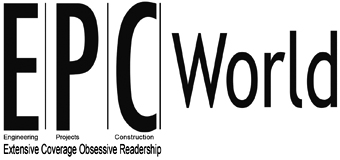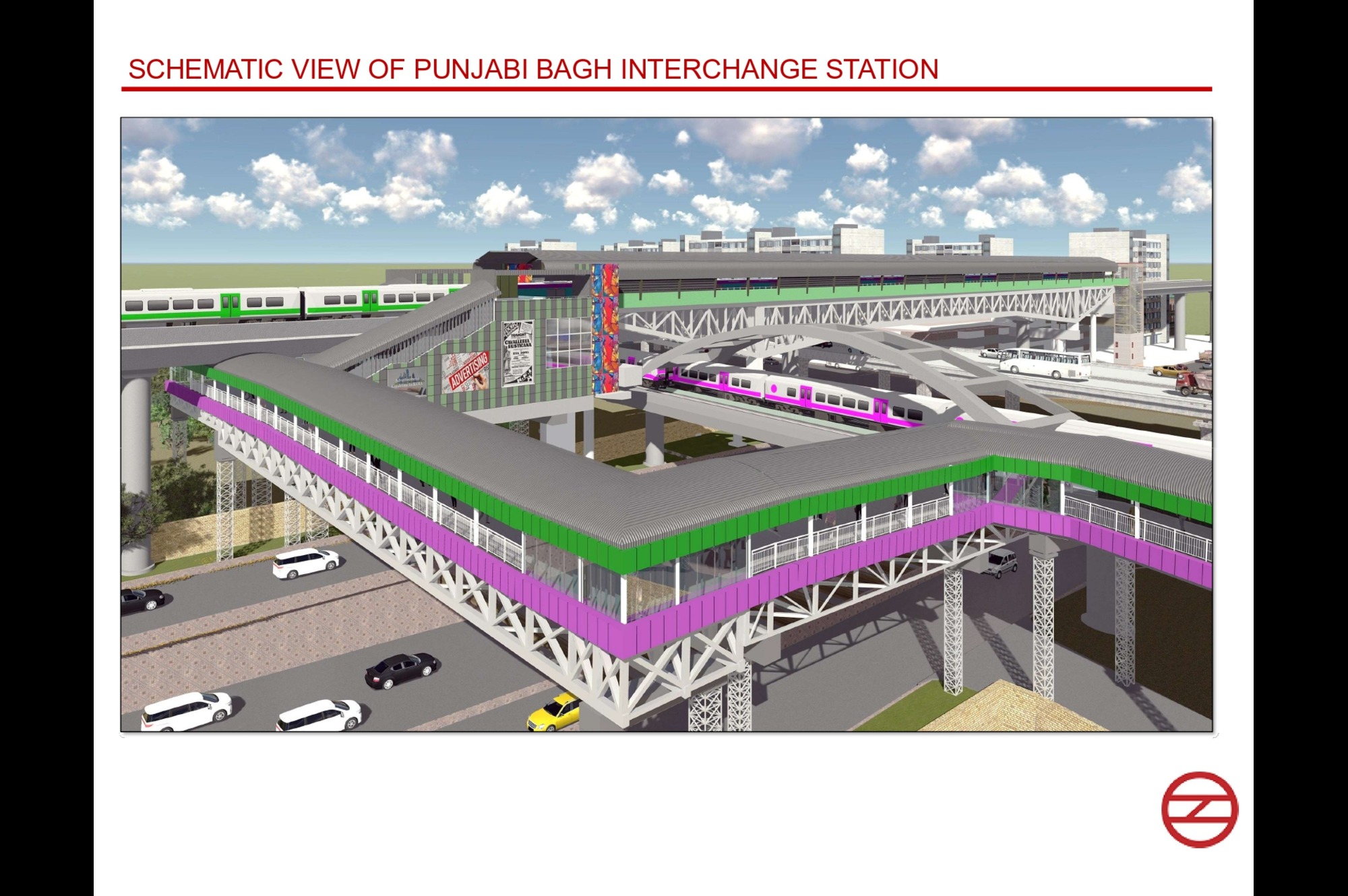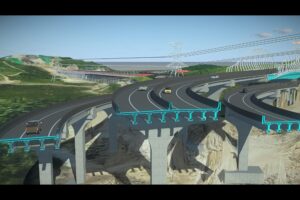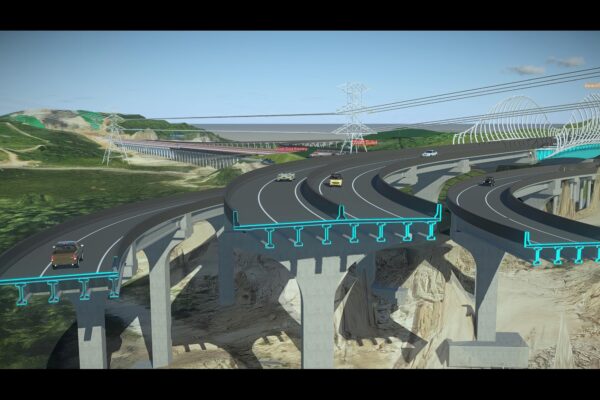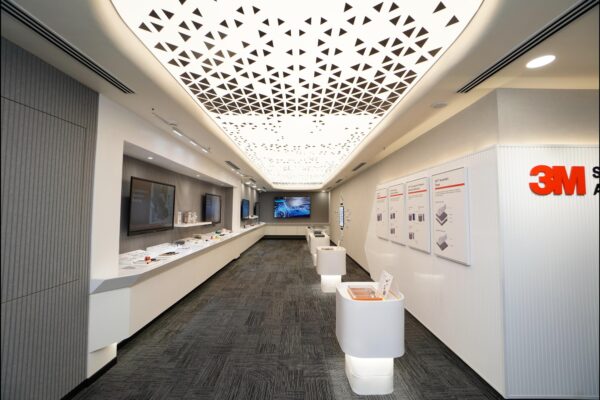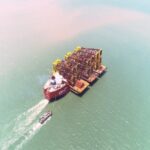Case Study: Delhi Metro Rail’s new interchange station enhances urban connectivity, supporting sustainable city transport
by April Reed, Director of Product Marketing, Bentley Systems
Establishing a digital twin saved nearly INR 8 million in costs and reduced the project’s carbon footprint
Improving public transport
To improve connectivity along Delhi’s metro line, Delhi Metro Rail Corporation (DMRC) initiated a project to construct the Punjabi Bagh interchange station, connecting the railway’s Green and Pink lines. The two lines cross one another, but despite the overlap, there was no connecting facility. Passengers did not have direct access between the lines, necessitating an interchange station. “While the Pink Line (Line-7) has interchange facilities with all other lines that fall on its course, it did not have any link to the Green Line (Line-5) that crosses it between Inderlok and Mundka, resulting in no direct connectivity between South Delhi and areas like Paschim Vihar, Nangloi, Punjabi Bagh, and Madipu,” explained Viraj Gupta, senior deputy general manager at DMRC.
DMRC decided to build the new facility as a halt station without a concourse area, retrofitting 155-meter-long platforms on the Green Line and constructing a 212-meter connecting foot-overbridge (FOB) linking to the Pink Line’s existing Punjabi Bagh station. The new platforms are connected to the FOB by staircases, as well as two 26-passenger elevators. Riders can board and deboard at the new interchange station, enabling them to connect directly between the Green and Pink lines. This connection will eliminate multiple and time-consuming train changes, offering fast and easy transport to the various locations along the 59-kilometer Pink corridor. “This innovative concept has improved the public transport experience of current users by providing better facilities and shorter travel times, as well as makes public transport usage more attractive by reducing barriers during the trip,” said Gupta.
Connecting two operational rail lines
Designed as a halt station connecting two operating rail lines, the new interchange facility on the Green Line is not a conventional station and presented technical and engineering challenges. “The DMRC has never constructed a station that connects two operating routes before,” said Gupta. The existing Green Line viaduct crosses the Punjabi Bagh flyover and Pink metro line, requiring the platforms to be constructed and supported at a specified height with long-span steel truss structures and column foundations. Determining the optimal height and design, and executing construction amid constant heavy traffic and space constraints, required careful planning and a well-defined construction methodology.
“The design of this interchange was an engineering challenge,” said Gupta. To address these challenges, DMRC sought to modify the Green Line operational viaduct, have the structural steel platforms prefabricated, and retrofit the entirely new halt station with the platforms along the line. They realized that to implement their plan, they needed integrated applications for 3D modeling, simulation, and analysis to optimize structural integrity, design, and construction.
Leveraging Bentley’s integrated modeling and analysis applications
DMRC determined that Bentley’s open BIM and structural modeling and analysis applications provided the collaborative platform and digital twin solution they needed to create the 3D models, compare various design scenarios, and simulate the construction process. “In order to create 3D models, drawings, and simulations for this project, OpenBridge Designer, STAAD, and RAM were combined. This allowed for the creation and comparison of several design possibilities for the pedestrian bridge and viaduct platform adjacent to the Green Line,” explained Gupta. The flexible modeling environment and advanced data workflow features of STAAD and RAM streamlined transfer of model data, enabling engineers to precisely analyze load cases and design forces to optimize structural steel connections and concrete column foundations.
Using Bentley’s applications, DMRC generated a digital twin, offering visual insight into the station’s structural features. “The DMRC [used Bentley’s integrated technology] for the analysis, modeling and design of the structure by creating a digital twin of the structure,” said Gupta. They used the digital twin to synchronize the design and construction methodology, developing accurate, convenient, and coordinated workflows to help overcome the engineering hurdles of this project. The digital twin solution simplified change management, enabling real-time model updates that were available to the entire team and stakeholders to make intelligent decisions prior to executing any works on site.
Digital Twin delivers savings and sustainability
Working in a collaborative digital environment streamlined workflows and facilitated clash detection, improving the DMRC’s efficiencies by 20% and avoiding costly errors. With Bentley’s integrated structural modeling and analysis software, they enhanced data synchronization by 55% and decreased modeling times by 40%. Through real-time model updates that accurately reflected design changes, the team saved approximately 1,200 resource hours. Creating the digital twin enabled the organization to obtain more accurate construction bids and save between 8% and 10% on building costs. “An overall cost savings of up to 8 million INR was achieved by DMRC with the use of Bentley software,” said Gupta.
Bentley’s innovative software solutions provided the speed and flexibility necessary to quickly create and evaluate multiple, alternative design scenarios. “Comparing manual design methodologies with Bentley’s applications, DMRC was able to arrive at an ideal solution 70% faster by rapidly analyzing several structural designs,” stated Gupta. The collaborative platform allowed engineers to select the most cost-effective options, saving 1,000 cubic meters of concrete and 350 megatons of steel to reduce the project’s overall carbon footprint.
Built as a green building improving railway connectivity across Delhi, the Punjabi Bagh interchange project supports sustainable transport, reducing pollution with fewer automobiles on the road. “DMRC has also been certified by the United Nations as the first metro rail and rail-based system in the world to get carbon credits for reducing greenhouse gas emissions as it has helped to reduce pollution levels in the city by [630,000] tons every year, thus helping in reducing global warming,” concluded Gupta.
Tags
Related Posts
